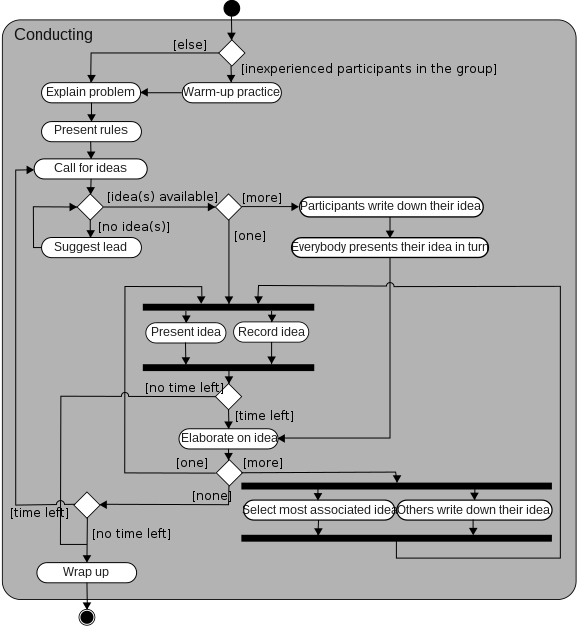Brainstorming
Brainstorming is a group creativity technique by which efforts are made to find a conclusion for a specific problem by gathering a list of ideas spontaneously contributed by its members.
The term was popularized by Alex Faickney Osborn in the 1953 book Applied Imagination.
Origin
Advertising executive Alex F. Osborn began developing methods for creative problem solving in 1939. He was frustrated by employees’ inability to develop creative ideas individually for ad campaigns. In response, he began hosting group-thinking sessions and discovered a significant improvement in the quality and quantity of ideas produced by employees.Osborn's method
Osborn claimed that two principles contribute to "ideative efficacy," these being :- Defer judgment,
- Reach for quantity.[2]
- reduce social inhibitions among group members.
- stimulate idea generation.
- increase overall creativity of the group.
- go for quantity: This rule is a means of enhancing divergent production, aiming to facilitate problem solving through the maxim quantity breeds quality. The assumption is that the greater the number of ideas generated, the bigger the chance of producing a radical and effective solution.
- Withhold criticism: In brainstorming, criticism of ideas generated should be put 'on hold'. Instead, participants should focus on extending or adding to ideas, reserving criticism for a later 'critical stage' of the process. By suspending judgment, participants will feel free to generate unusual ideas.
- Welcome wild ideas: To get a good and long list of ideas, wild ideas are encouraged to have. They can be generated by looking from new perspectives and suspending assumptions. These new ways of thinking might give you better solutions.
- Combine and improve ideas:As suggested by the slogan "1+1=3". It is believed to stimulate the building of ideas by a process of association.

No hay comentarios.:
Publicar un comentario